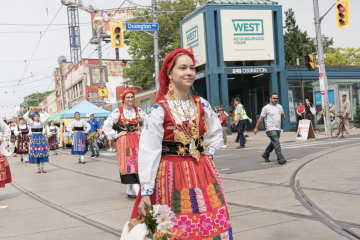Unveiling the Roma: A Journey Through Culture and History

Introduction
The Roma, often referred to as Romani or Gypsies, are a unique ethnic group with a profound cultural heritage and a history that spans centuries. Their contribution to European culture is significant, yet they often face stereotypes and discrimination. Understanding the Roma community is crucial, especially in a time when globalization seeks to connect diverse cultures. This article explores the importance of Roma identity, their historical roots, and the contemporary challenges they encounter.
Historical Background
Originating from northern India, the Roma migrated to Europe around a thousand years ago. Historical records indicate their presence in various countries, including Romania, Hungary, and Spain, where they integrated elements of local cultures while retaining their unique traditions. Over the years, the Roma have faced systemic discrimination and persecution, most notably during the Holocaust, when an estimated 500,000 Roma were murdered. This tragic part of their history contributes to the ongoing struggle for recognition and rights in modern society.
Culture and Contributions
The Roma culture is rich and diverse, characterized by traditional music, dance, and crafts. Genres like Romani jazz and flamenco have influenced global music, showcasing the Roma’s artistic contributions. Festivals celebrating Romani music and culture are held in various parts of Europe, promoting understanding and appreciation of their heritage. Additionally, the Roma have a strong emphasis on family ties and community, which plays a significant role in their social structure.
Contemporary Issues
Despite their rich culture, the Roma continue to face severe social challenges, including poverty, discrimination, and lack of access to education and healthcare. According to the European Union Agency for Fundamental Rights, many Roma live in marginalized communities, often facing segregation. In recent years, efforts have been made to improve the situation, with various NGOs and government initiatives aimed at promoting equality and integration. However, the path to societal acceptance remains fraught with obstacles, as stereotypes and prejudices persist in many parts of Europe.
Conclusion
Recognizing and understanding the Roma community is essential in fostering a more inclusive society. As globalization connects cultures, it’s important to support initiatives that promote the rights and incorporation of Roma individuals into broader societal frameworks. By respecting their identity and culture, we take important steps towards breaking down barriers and addressing the injustices faced by the Roma. Looking forward, dialogue and education will be vital in changing perceptions and ensuring that Roma culture continues to enrich the tapestry of European society.







